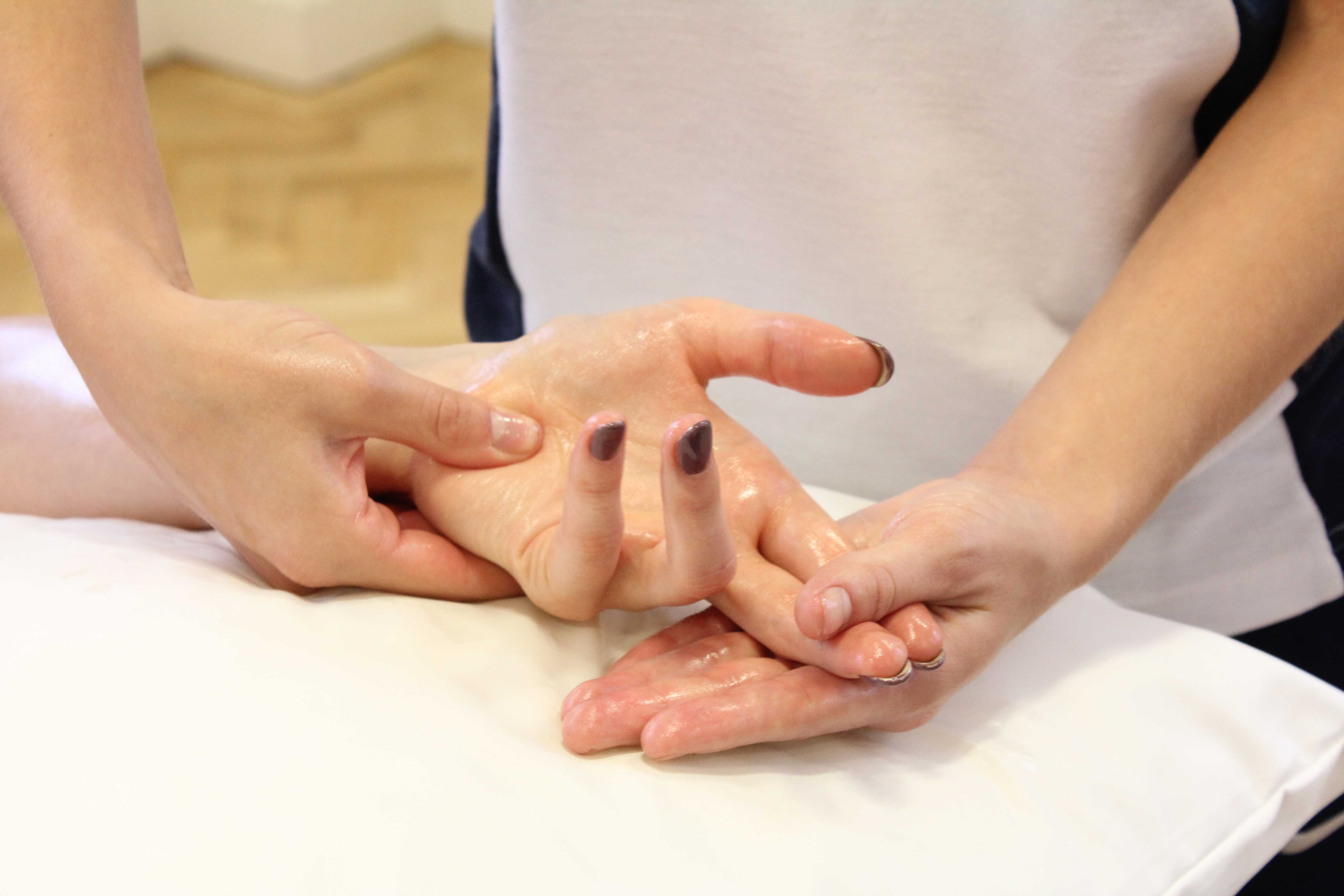What is a ligament injury in the fingers?
A ligament injury in a finger is when one or more of the ligaments supporting a finger joint is overstretched and damaged. Physiotherapy is important following a ligament injury in the finger.
How does a ligament injury in the fingers happen?
Ligaments are injured when they are overstretched. This can occur if a finger is bent back with force. This is common in the sports and may be caused by a ball hitting the finger or if a finger gets caught on a fellow competitor’s clothing, a net or the ground.
 Above: Soft tissue massage and mobilisations of the finger tendons and joints
Above: Soft tissue massage and mobilisations of the finger tendons and jointsWhat are the symptoms of a ligament injury in the fingers?
When a ligament supporting a finger joint is injured pain is felt in the finger. It is often made more painful if the joint is moved or if the finger is touched where the ligament is injured. Shortly after the injury the finger will become swollen and then bruised. Other symptoms may include:
What should I do if I have a ligament injury in my finger?
If you have or suspect you have a ligament injury in your finger, you should begin the RICE regime (Rest, Ice, Compression, and Elevation). Rest involves not using your finger. Ice should be applied to the injured site for 15–20 minutes every 1–2 hours using a bag of frozen peas in a moist cloth or towel or by submerging the finger in a cup of ice with a little bit of water. Compression can be applied with a firm elastic bandage around the finger. Elevation involves lying or sitting with the injured site resting comfortably on a chair or pillows so that it is above the level of the heart. You should continue the RICE regime until your initial assessment with your physiotherapist. This should be arranged for as soon as possible following the injury (within the first couple of days).
Physiotherapy treatment for a ligament injury in the fingers.
Physiotherapy is very important in the treatment of an injured ligament within a finger. Initially, your physiotherapist will assess which tissues have been damaged and the extent of this damage. Referral for an X-ray may be required to determine whether any of the bones are damaged. From the assessment, your physiotherapist can devise a treatment plan specific to you.
Treatment may involve wearing a splint, electrotherapy to decrease pain, swelling and promote healing. Your physiotherapist will also provide you with a graduated programme of stretching and strengthening exercises to improve joint movement and strength. When you do return to normal activity or participation in sports your physiotherapist will advise you on protective measures such as taping techniques, splints and supports to protect the injured ligament/s.
Other treatment includes:
- Wax therapy
- Massage
- Soft Tissue Treatment
- Proprioceptive Exercise
What shouldn’t I do if I have a ligament injury in my finger?
If you have or suspect you have a ligament injury in your finger, you should not perform activities which increase blood flow to the injured area. These activities include hot showers, heat rubs, massage and the consumption of alcohol. These may increase swelling around the injured ligament and potentially prolong your recovery.
Can there be any long-term effects from a ligament injury in the fingers?
Most ligament injuries within a finger heal without complication in a matter of weeks. However, a proportion of injuries can result in longer-term effects, depending on the severity of the injury and extent of damage. When a ligament supporting a finger joint is injured, a piece of the bone it attaches can sometimes be chipped-off. This may prolong your recovery. Recovery may also be prolonged if the ligament is completely torn as surgery may be required to repair the ligament.
To arrange a physiotherapy assessment call Physio.co.uk on 0330 088 7800 or book online.

 0330 088 7800
0330 088 7800


































